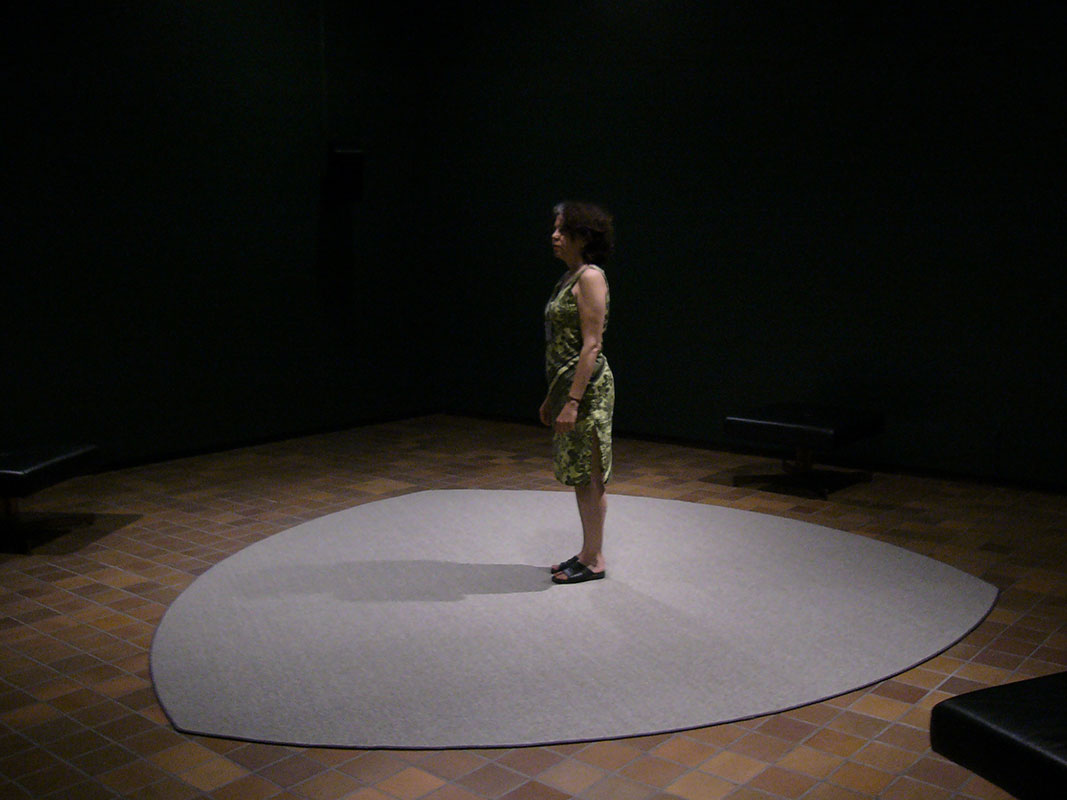Canciones de las Madres (Songs of the Mothers) 2005
Media: a DVD programmed for surround sound
(can also be played as a CD)
Voices: Paz Walton, Llanca Letelier, Ida Montenegro de Letelier
Audio engineer: Wes Caswell
Producer, director: Cherie Moses
Date of premiere: February 2005
About the Project
This surround sound audio environment is based on the dialogs of three women. They are three generations of one family. Also, they are Chilean immigrants who have in varying degrees the ability to move between English and Spanish. Their names are Ida, Llanca and Paz and all three live in Edmonton. At the time of the recording Ida was 97 years old, Llanca was 69 and Paz was 37.
The audio has been done with both languages as they each constructed their own script with my assistance. I asked them to talk about subjects that they have agreed upon in advance and their stories and words are directed toward their respective children. Ida speaks to Llanca; Llanca speaks to Paz; Paz speaks to each of her three children. This collaborative scripting gave them the opportunity to insert their content into the text.
The topics cover subjects such as Chile, love, danger, Canada…. about 25 topics in total. The simple directive was that they address their children and that they describe, advise, warn and tell them important things about each topic as if this was their final opportunity to do so. The emphasis was on what they wanted to say for memory.
The Spanish is not a direct simultaneous translation. And each woman appears to speak a little differently when using her first language. When there is some translation, it is generally non-linear.
The result has been an interesting set of ideas surrounding identity and personal/moral issues. The wish to be remembered in a particular fashion drives much of their dialogue. Embedded in this is a small history of their psychological adaptation to the duality of two cultures.
As each mother/grandmother/great-grandmother has children of different ages, the dialogue often shifts. For example, Paz, the youngest of the three, has three different children whom she sometimes addresses individually.
The title Canciones de las Madres translates as Songs of the Mothers. The “singing” is metaphorical. It is their interwoven dialogs with the cadence of the languages and the cadence of the audio overlays of their voices. The dialog moves fluidly from English to Spanish and back again.
I am continuing to pursue my interests in technological interfacing, storytelling, language and cross-cultural identity.
About Technology
As I work, live and taught using technology, I have many different thoughts pertaining to its value as well as the hierarchy it can impose. Who controls the technology, the cost of technological interventions, as well as who is trained to use it and how, are all questions I consider. By working with Llanca, Ida and Paz on the scripting, I am hoping they will retain more authorship of their own words. I am aware that the editing, overlaying and timing that I do with the audio technician impacts tremendously on how the stories are perceived. The editing makes the words far more haunting and the juxtaposition of thoughts sounds much like a well-calibrated internal dialogue.
As a result of this project, these three women have had their words placed into the context of an authoritative space created by both the technology and the gallery/museum. Their own reflections on the result of this was of great interest to me. This piece is certainly a dramatic change in how they, as private entities, will be perceived in a public space.
I see the oral tradition complemented by the interface of sound technology. As all history is intimated, my piece attempts to capture one small angle of perception into the complex lives of these women.
– Cherie Moses


